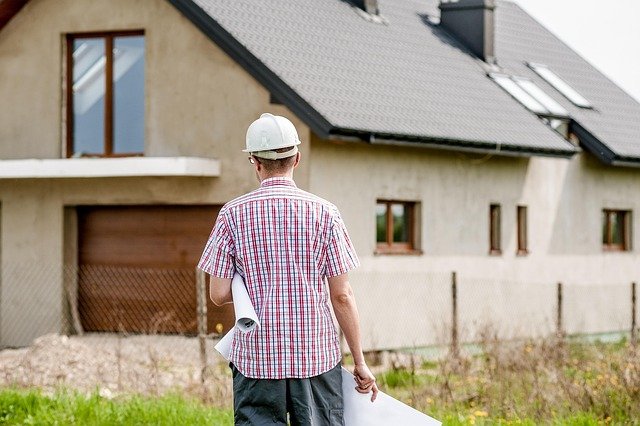What You Need to Know About Container Home Prices
Container homes have gained popularity as an affordable and sustainable housing alternative. These dwellings, constructed from repurposed shipping containers, offer a unique approach to residential architecture while potentially reducing environmental impact. Understanding the true costs involved in building or purchasing a container home requires looking beyond the price of the container itself. This article examines the various factors that affect container home prices, helping potential buyers make informed decisions about whether this housing option aligns with their budget and lifestyle needs.

How the True Cost of Container Homes is Calculated
The calculation of container home costs involves multiple components that extend well beyond the price of the shipping container. A standard 20-foot container may cost between $2,000-$5,000, while a 40-foot container typically ranges from $3,500-$7,000. However, this represents only the starting point. The transformation from shipping container to livable dwelling requires considerable additional investment. Construction costs typically include insulation ($2,000-$6,000), interior framing ($7,000-$15,000), electrical work ($3,000-$5,000), plumbing ($5,000-$10,000), and HVAC systems ($3,000-$7,000).
Material selection significantly impacts the final price. Premium finishes like hardwood flooring, granite countertops, and high-end appliances can quickly escalate costs. Conversely, choosing standard materials and fixtures can help maintain a more modest budget. Container modification costs also vary based on complexity—cutting windows and doors, reinforcing structural elements when removing walls, and adding architectural features all contribute to the overall expense.
Why Average Container Home Prices Differ from Traditional Housing
Container homes often start with the promise of affordability compared to traditional construction, but the reality can be more nuanced. Traditional homes have standardized construction methods with predictable costs, while container modifications require specialized knowledge and equipment. Container homes typically range from $100-$300 per square foot when professionally built, compared to $100-$200 per square foot for conventional construction in many regions.
Permitting presents another point of difference. Some municipalities have unclear regulations regarding container structures, potentially requiring additional engineering reports, architectural plans, or variance applications that increase costs. Foundation requirements also differ—while traditional homes commonly use standard foundation designs, containers may need specialized foundations to prevent corrosion and ensure proper support at specific points.
Long-term considerations such as insurance and resale value further distinguish container from traditional housing costs. Insurance companies may charge higher premiums for container homes due to their unconventional construction, while resale markets for these alternative dwellings remain less established than those for traditional housing.
Key Factors to Consider Before Purchasing a Container Home
Location significantly influences container home costs through land prices, local building codes, and climate considerations. Rural areas typically offer more affordable land and fewer restrictions compared to urban zones, where zoning laws may severely limit container home placement. Climate also dictates insulation requirements—homes in extreme temperature regions require more sophisticated (and expensive) insulation solutions to maintain comfort and energy efficiency.
The age and condition of shipping containers represent another critical consideration. New “one-trip” containers cost more but require less remediation, while used containers may need rust removal, structural repairs, or decontamination from previous cargo. Structural modifications for doorways, windows, and interior spaces must be carefully planned to maintain the container’s integrity, with each cut requiring appropriate reinforcement.
Utility connections present potential hidden costs. If the property lacks existing water, sewer, or electrical connections, establishing these services can add thousands to the project budget. Off-grid solutions like solar power systems, water collection, and composting toilets offer alternatives but come with their own significant upfront costs.
Container Home Price Comparisons Across Different Designs
The container home market offers various approaches at different price points, from DIY projects to luxury architect-designed structures. Understanding these categories helps set realistic budget expectations.
| Container Home Type | Typical Price Range | Key Features | Average Timeline |
|---|---|---|---|
| DIY Basic (Single Container) | $15,000-$40,000 | Minimal amenities, owner-built, simple design | 3-6 months |
| Professional Basic Build | $50,000-$100,000 | Single container, contractor-built, standard finishes | 2-4 months |
| Mid-Range Multi-Container | $100,000-$200,000 | 2-4 containers, custom features, higher-end finishes | 4-8 months |
| Luxury Container Home | $200,000-$400,000+ | Architect-designed, premium materials, complex designs | 6-12 months |
Prices, rates, or cost estimates mentioned in this article are based on the latest available information but may change over time. Independent research is advised before making financial decisions.
The price variation across these models reflects differences in size, complexity, and finish quality. While DIY approaches offer the lowest entry point, they require significant time investment and construction knowledge. Professional builds provide quality assurance but at higher costs. Multi-container designs dramatically increase living space but also complexity, requiring more sophisticated engineering solutions to connect units securely and weatherproof the joints between containers.
Financial Considerations for Container Home Investment
The total investment in a container home extends beyond construction costs to include long-term financial implications. Financing container homes can prove challenging as some traditional lenders remain hesitant to provide mortgages for alternative housing structures. Specialized lenders may offer solutions but often at higher interest rates than conventional mortgages. Alternatively, personal construction loans or home equity lines of credit provide funding options for those with existing properties.
Energy efficiency impacts long-term affordability. While the initial cost of superior insulation, energy-efficient windows, and solar power systems increases upfront expenses, these investments typically reduce ongoing utility costs. Properly designed container homes can achieve excellent thermal performance when insulated correctly for their climate zone.
Maintenance requirements differ from traditional homes. Container exteriors require regular inspection for rust and may need repainting with marine-grade products every 5-10 years. The steel structure eliminates concerns about termites or rot but introduces different maintenance considerations than wood-frame construction.
Container homes represent an intriguing alternative to conventional housing, with prices that vary widely based on design complexity, material choices, and construction approach. By understanding how these costs accumulate and differ from traditional construction, potential container home owners can make more informed decisions about whether this housing style aligns with their budget and lifestyle goals.




